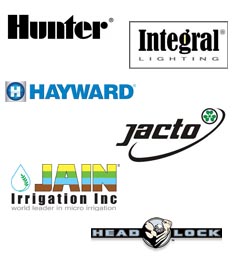
An Important Step In Lawn Maintenance
When it comes to lawn maintenance, one area of hot debate is at what point should you dethatch your lawn. Though there are a variety of answers, the truth of the matter is that it depends on your circumstances. But what exactly does dethatching your lawn do, in terms of both the task and the outcome? Let’s take a look and see which benefits dethatching provides, when it should be done, and how to dethatch your lawn.
What is dethatching?
Thatch is made-up of the dead leaves, stems, and roots that form part of the soil structure as part of your lawn’s natural growing cycles. Though it can be beneficial by preventing compaction, helping with soil moisture retention and buffering the grass crown against rapid temperature shifts, it’s one of those areas where there can be too much of a good thing. Dethatching helps you remove the excess thatch to restore the balance point for your lawn.
What benefits does it provide?
When thatch is too thick, it prevents water, nutrients, and pesticides from reaching the soil, neutralizing the effects of these essentials. It also blocks sunlight from lower leaves of the grass plant, prevents the roots from reaching the soil and the nutrients they seek, and creates an uneven lawn surface. Dethatching helps address these issues.
When should it be performed?
You can avoid thatch to a certain extent, by avoiding over-fertilizing with too much nitrogen, amending heavy clay soils, and avoiding overwatering. Once thatch has become too thick, you’ll need to consider dethatching. But how much is too much? If the lawn feels soft or springy under your feet, if you can’t push your finger through the thatch to the soil or if the layer is over 3/4″ thick, it’s time to dethatch your lawn.
How to dethatch your lawn
A dethatching machine is basically a vertical mower that cuts through the thatch with a vertical blade. Once the thatch has been cut, you need to use a rake to pull the loose thatch together and remove it from the soil surface. That’s it! Then you can apply amendments, aerate, water, and reseed as needed.
Now that you know why it’s important to dethatch your lawn, it’s time to take a look and determine when the best time is to do so. At Irrigation Outlet, our experienced associates are always ready to help with all your lawn care and irrigation needs. Please contact us today with any questions or for further information on our products.





